Power Of Palette Knife Painting
Exploring the dynamic art form of palette knife painting, one quickly realizes that this technique is more than just a method of applying paint; it’s a way to unleash creativity and express emotions in a vivid manner. Imagine wielding a palette knife like a sculptor with a chisel, transforming a blank canvas into a vibrant tapestry of color and texture. The beauty of palette knife painting lies in its ability to create stunning visual effects that can captivate any viewer. Whether you’re a seasoned artist or a curious beginner, this technique offers a unique opportunity to explore the interplay of color and form.
Palette knife painting allows artists to experiment with a variety of styles, from impressionistic landscapes to abstract compositions. The rich textures and bold strokes achievable through this method can evoke feelings and tell stories in ways that traditional brushwork may not. It’s akin to cooking; just as a chef uses different utensils to create a dish, an artist uses a palette knife to mix, layer, and manipulate paint, resulting in a feast for the eyes.
In this article, we will delve into the various techniques that define palette knife painting, explore the numerous benefits it offers, and provide tips for both beginners and experienced artists. We’ll also take a look at inspirational figures who have mastered this art form and how their influence can guide your own creative journey. So, grab your palette knife, and let’s dive into this exciting world of color and texture!
Palette knife painting involves various techniques that create distinct textures and effects. This section will introduce fundamental methods, including scraping, layering, and blending, essential for mastering this expressive art form. Each technique has its unique characteristics, allowing artists to manipulate paint in ways that are both exciting and unpredictable.
Engaging in palette knife painting offers numerous benefits, including enhanced creativity and improved motor skills. This section discusses how this technique can elevate your artistic journey and provide a fulfilling experience. Not only does it challenge your artistic abilities, but it also encourages you to think outside the box and embrace spontaneity.
One of the most exciting aspects of palette knife painting is its ability to create rich textures. This subsection explores different approaches to texture creation, adding depth and interest to your artwork. The rough edges and smooth surfaces achieved with a palette knife can evoke different emotions and responses from viewers, making your art truly engaging.
Layering is crucial in palette knife painting, allowing artists to build complexity. This segment will detail various layering techniques that can enhance the visual impact of your paintings. By applying paint in layers, you can create depth and dimension that draws the eye into your work.
Scraping and blending techniques are essential for achieving smooth transitions and dynamic contrasts. This part will provide insights into how to effectively use these methods in your palette knife work. The ability to scrape away paint can reveal underlying layers, creating a sense of history and narrative in your artwork.
Selecting the appropriate palette knife is vital for achieving desired effects. This section will guide you through the different types of knives available and their specific uses in painting. Understanding the nuances of each knife can significantly impact your technique and the final outcome of your artwork.
Many renowned artists have utilized palette knives to create stunning works. This section will highlight a few influential figures and analyze how their techniques can inspire your own palette knife painting. Learning from the masters can provide valuable insights and spark new ideas for your artistic practice.
Contemporary artists continue to push the boundaries of palette knife painting. This subsection will explore how modern techniques and themes are being incorporated into this traditional art form. The evolution of palette knife painting reflects the changing landscape of art itself, embracing innovation while honoring tradition.
Understanding the historical context of palette knife painting can enrich your practice. This part will examine key historical figures and movements that have shaped the evolution of this technique. By knowing the roots of your craft, you can better appreciate its potential and find your unique voice within it.
- What is palette knife painting? Palette knife painting is a technique that uses a palette knife to apply paint to a canvas, creating unique textures and effects.
- Is palette knife painting suitable for beginners? Absolutely! Palette knife painting is accessible to artists of all skill levels and can be a fun way to explore creativity.
- What types of paint can I use with a palette knife? You can use various types of paint, including acrylics and oils, to achieve different effects.
- How do I clean my palette knife? Cleaning your palette knife is simple; just use a cloth or paper towel to wipe off excess paint, and wash it with soap and water.
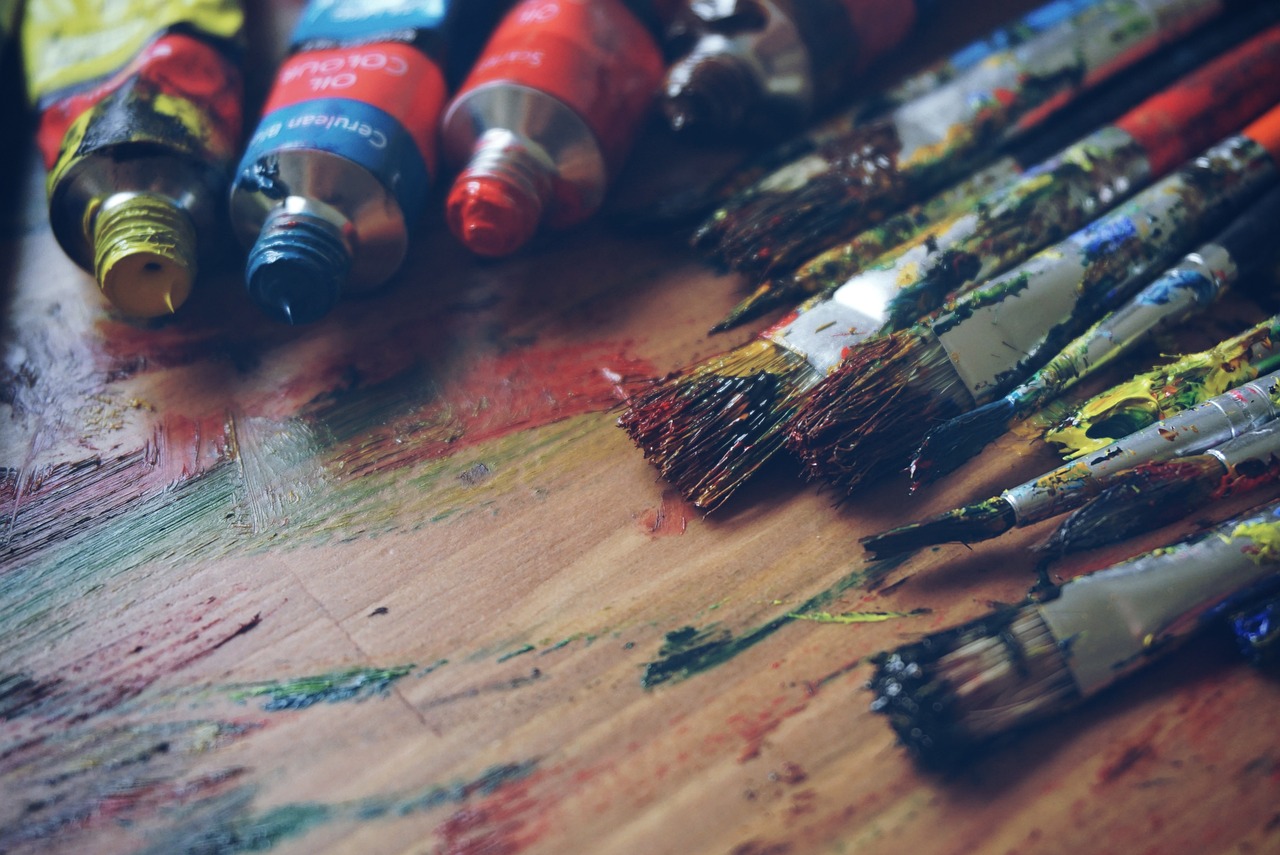
Understanding Palette Knife Techniques
Palette knife painting is a mesmerizing technique that opens up a world of creative possibilities. At its core, this art form involves using a palette knife to apply paint to a canvas, creating a variety of textures and effects that traditional brushes simply can't achieve. Imagine the knife gliding across the surface, leaving behind not just color but also a unique tactile quality that invites viewers to engage with your artwork on a deeper level. The beauty of palette knife painting lies in its versatility, allowing artists to develop their own distinctive styles while exploring fundamental techniques.
To truly master palette knife painting, it's essential to understand several key techniques that form the foundation of this expressive medium. These techniques include:
- Scraping: This method involves removing paint from the canvas, revealing layers beneath and creating interesting contrasts.
- Layering: By applying multiple layers of paint, artists can build depth and complexity in their work, enhancing visual interest.
- Blending: This technique allows for smooth transitions between colors, creating gradients that add dimension to your paintings.
Each of these techniques contributes to the overall impact of your artwork. For instance, scraping can introduce unexpected surprises, revealing a hidden world of color and texture that might otherwise remain concealed. Layering, on the other hand, can transform a flat image into a vibrant landscape, full of life and energy. Blending allows for seamless color transitions, making your paintings feel more cohesive and harmonious.
As you dive deeper into palette knife painting, it's crucial to experiment with these techniques in various combinations. Don't hesitate to mix and match; after all, art is about exploration and self-expression. You might find that scraping and layering together create a stunning effect that captures the essence of a sunset or a bustling cityscape. The key is to be open to the process and allow your creativity to guide you.
Moreover, understanding the physicality of the palette knife is equally important. Different knives come in various shapes and sizes, each offering unique capabilities. Some knives have a straight edge, perfect for sharp lines and defined shapes, while others feature a rounded edge, ideal for soft blending and sweeping strokes. Experimenting with different knives will help you discover the best tools for your artistic vision.
In conclusion, mastering palette knife techniques is a journey filled with discovery. The more you practice scraping, layering, and blending, the more confident you'll become in your abilities. Embrace the textures and colors that emerge from your efforts, and remember that every stroke is a step toward developing your unique artistic voice. So grab your palette knife, and let your imagination run wild!
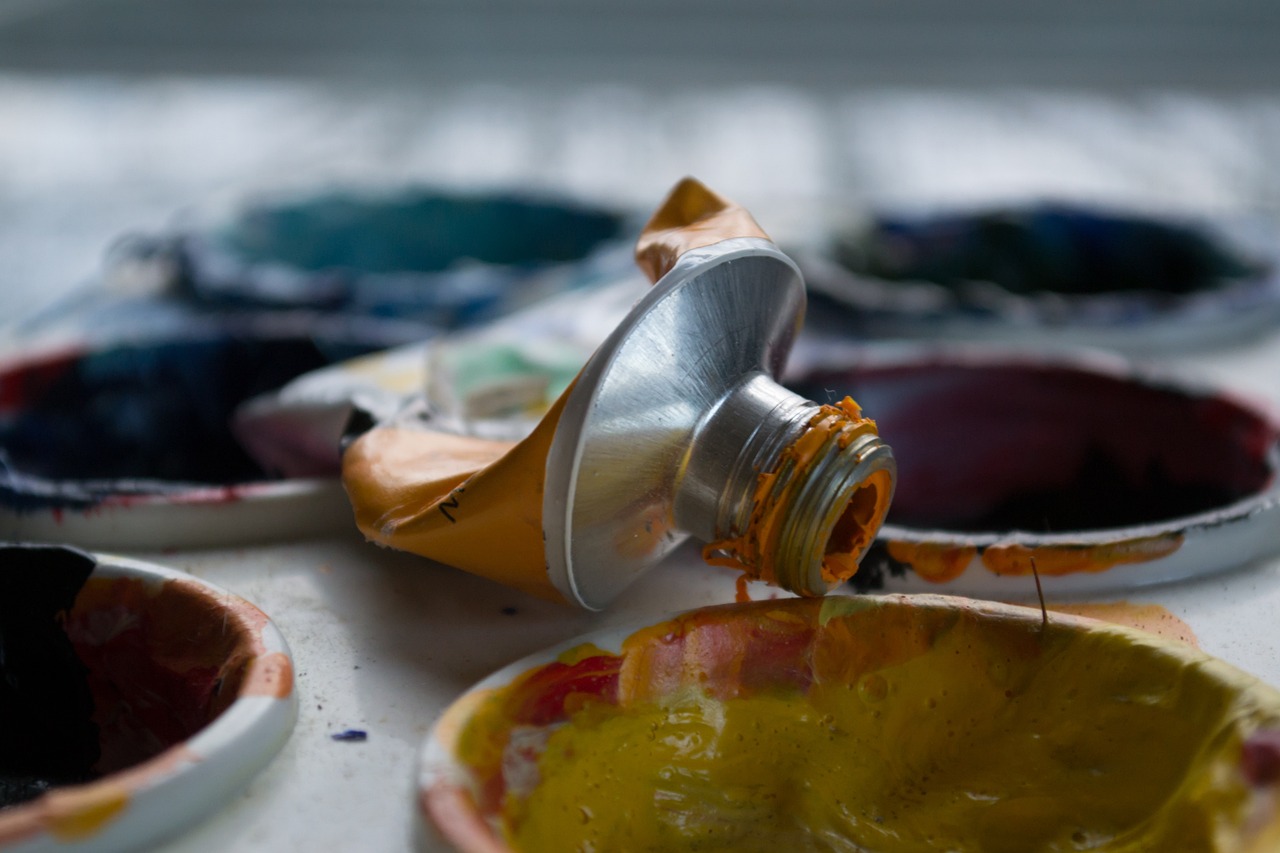
The Benefits of Palette Knife Painting
Engaging in palette knife painting opens up a world of creativity and expression that many artists find both liberating and fulfilling. Unlike traditional brush techniques, using a palette knife allows for a unique approach to applying paint, which can lead to unexpected and exciting results. This art form not only enhances your artistic skills but also offers a myriad of benefits that can elevate your overall experience as an artist.
One of the most significant advantages of palette knife painting is the enhanced creativity it fosters. When you wield a knife instead of a brush, you are encouraged to think outside the box and experiment with different styles and techniques. The knife's flat edge allows for bold strokes and the ability to create vibrant layers of color that can transform your canvas into a dynamic visual feast. This freedom often leads to a more playful and innovative approach to art, pushing you to explore your individual style.
Moreover, palette knife painting can significantly improve your motor skills. The physical act of applying paint with a knife requires different hand movements and grips than a brush, promoting hand-eye coordination and dexterity. As you practice, you'll notice an improvement in your ability to control the knife, which translates to better precision in your artwork. This enhancement in motor skills is not just limited to painting; it can benefit other areas of your life where fine motor control is essential.
Another compelling benefit is the therapeutic aspect of palette knife painting. Many artists find the process to be a form of meditation, allowing them to escape from the stresses of daily life. The repetitive motion of applying paint and the tactile sensation of the knife against the canvas can be incredibly soothing. It's a form of self-expression that can help clear your mind, reduce anxiety, and even boost your mood. The joy of creating something beautiful with your own hands is a reward in itself.
Palette knife painting also offers the opportunity to create rich, textured artwork that can be visually stunning. The unique techniques involved in creating texture—such as layering, scraping, and blending—allow artists to add depth and dimension to their pieces. Texture creation can transform a simple painting into something extraordinary, engaging the viewer on multiple levels. The tactile quality of the paint can evoke emotions and provoke thoughts, making your artwork not just a visual experience but a sensory one as well.
In addition to these benefits, palette knife painting encourages a sense of community among artists. Many artists who work with this medium often share techniques, tips, and experiences, fostering a collaborative spirit. Workshops and online forums dedicated to palette knife painting can provide invaluable resources for both beginners and seasoned artists alike. This sense of belonging can enhance your artistic journey, making it not just about individual expression but also about shared experiences and learning from others.
In conclusion, the benefits of palette knife painting are manifold. From enhancing creativity and improving motor skills to providing therapeutic relief and fostering community, this dynamic art form offers something for everyone. Whether you're a novice looking to explore a new medium or an experienced artist seeking fresh inspiration, palette knife painting can enrich your artistic practice in ways you may not have imagined.
- What materials do I need to start palette knife painting?
To begin, you'll need a selection of palette knives, a canvas or painting surface, acrylic or oil paints, and a palette for mixing colors. Don't forget a rag or paper towels for cleaning your knife! - Can I use palette knives with watercolor paints?
While palette knives are primarily used with thicker paints like acrylics and oils, you can experiment with them in watercolor painting for unique effects, though it may require a different approach. - Is palette knife painting suitable for beginners?
Absolutely! Palette knife painting is accessible for beginners and can be a fun way to learn about color mixing and texture without the pressure of traditional brush techniques.
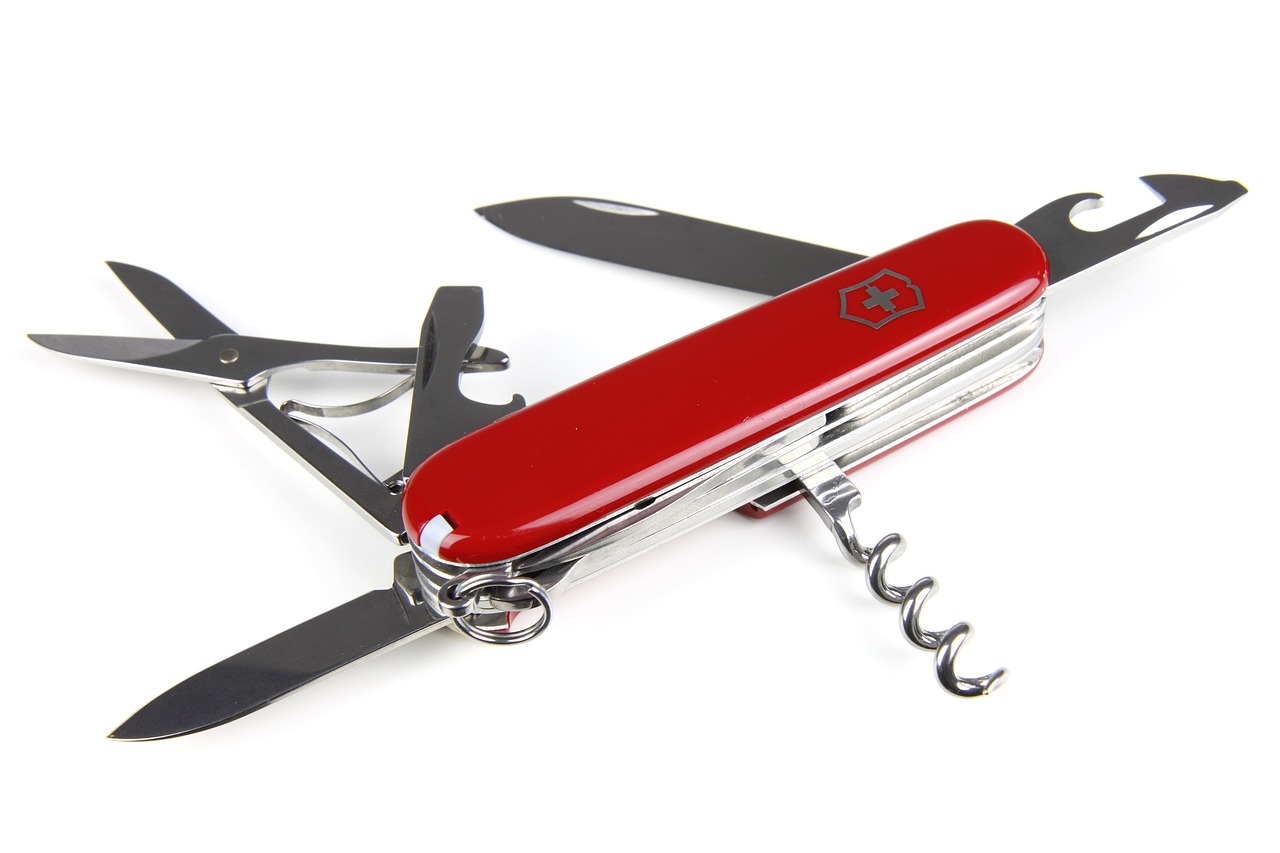
Texture Creation
One of the most exhilarating aspects of palette knife painting is its ability to create rich and captivating textures that can transform a simple canvas into a vibrant masterpiece. Unlike traditional brush techniques, the palette knife allows artists to apply paint in a way that adds depth and dimension, making each piece not just a visual delight but also a tactile experience. Imagine running your fingers over a painting and feeling the ridges and valleys created by the knife—it's like touching a piece of the artist's soul!
To achieve stunning textures, artists can experiment with various methods. For instance, using the edge of the knife to scrape through layers of wet paint can reveal the colors beneath, creating a beautiful contrast that draws the viewer in. Additionally, layering paint with a palette knife allows for a more three-dimensional effect, where the paint can stand out from the canvas, almost like a sculpture. This technique can be particularly effective in landscape paintings, where the roughness of mountains or the softness of clouds can be enhanced through texture.
Another exciting approach is the impasto technique, where thick layers of paint are applied to create bold strokes and dramatic textures. This method not only adds visual interest but also plays with light, as the raised areas catch and reflect it differently compared to the flat sections. Artists can also mix different mediums, such as gels or pastes, with their paint to create even more diverse textures. For example, adding a coarse medium can give a sandy feel to a beach scene, while a glossy medium can enhance the illusion of water.
It's crucial to remember that texture creation is not just about the physical application of paint; it’s also about the emotional response it elicits. Think of how a rough, jagged texture can convey chaos or turmoil, while smooth, flowing textures might evoke calmness and serenity. The choice of texture can profoundly affect the narrative of the artwork, inviting viewers to engage with it on a deeper level.
As you embark on your palette knife journey, don't hesitate to experiment with different techniques and materials. Here are some tips to inspire your texture creation:
- Experiment with Pressure: Varying the amount of pressure you apply with the knife can yield different effects. Light strokes create delicate textures, while heavy pressure can produce bold, dramatic lines.
- Use Different Knives: Each palette knife has a unique shape and flexibility. Try using various knives to see how they affect the texture and feel of your painting.
- Layer Wisely: Build up layers gradually. Start with a base layer and add more as you go, allowing each layer to dry if necessary to maintain clarity and prevent muddiness.
In conclusion, texture creation in palette knife painting is a thrilling adventure that allows artists to express their creativity in unique ways. By understanding and experimenting with various techniques, you can unlock the full potential of this dynamic art form and create pieces that resonate with viewers on multiple levels.
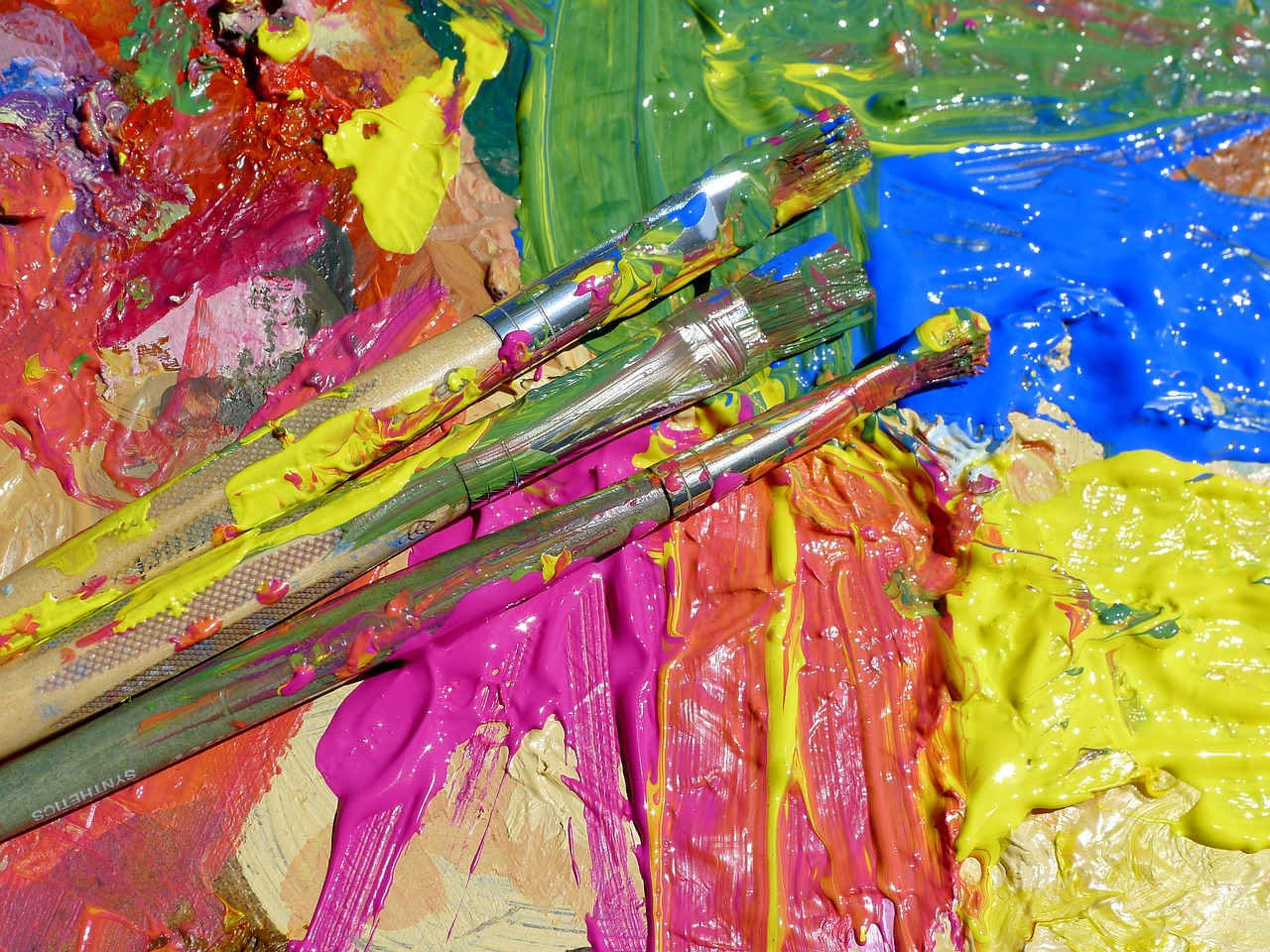
Layering Techniques
Layering is one of the most vital techniques in palette knife painting, acting as the backbone of your artwork's complexity and depth. Imagine constructing a beautiful cake where each layer adds flavor and texture; similarly, each layer of paint adds richness and dimension to your canvas. This method allows artists to build upon previous strokes, creating an intricate interplay of colors and textures that can be both exhilarating and rewarding.
To effectively layer in palette knife painting, one must consider the **drying time** of the paint. Using **acrylics**? They dry quickly, allowing you to add layers in a matter of minutes. On the other hand, if you're working with **oils**, patience is key, as they can take days to dry. The choice of paint will significantly affect your layering strategy. For instance, with acrylics, you can quickly apply a new layer over a dry one, while oils may require you to wait, leading to a more deliberate approach.
When layering, the **thickness** of each application is crucial. A thick layer can create a striking 3D effect, while a thinner application can offer a more subtle transition. Think of it like building a mountain range; the peaks and valleys create visual interest. Here are some layering techniques to consider:
- Glazing: This involves applying a thin, transparent layer of paint over a dried layer. It can enhance colors and add depth without obscuring the underlying details.
- Impasto: This technique uses thick paint to create texture. The paint stands out from the canvas, catching light and drawing the viewer's eye.
- Scumbling: A dry brush technique that allows for the underlying paint to show through, creating a soft, textured effect.
Each of these techniques can be used alone or in combination to achieve stunning results. For example, you might start with a heavy impasto layer to create texture and then follow it up with a glazing layer to add luminosity. The key is to experiment and find what works best for your artistic vision.
Moreover, consider the **color palette** you are using. Layering different hues can create a vibrant interplay that captivates the viewer. For instance, layering warm colors over cool colors can produce a stunning contrast that makes your artwork pop. Don't shy away from mixing colors directly on the palette knife before applying them to the canvas; this can yield unexpected and delightful results.
Ultimately, mastering layering techniques in palette knife painting is about practice and experimentation. The more you play with different methods, the more you'll discover your unique style. So grab your palette knife, and let your creativity flow as you explore the endless possibilities that layering can offer!
1. What is the best type of paint for palette knife painting?
Both acrylic and oil paints work well for palette knife painting. Acrylics dry quickly, making them ideal for layering, while oils offer a longer working time for blending.
2. Can I use a palette knife with watercolor?
While palette knives are not typically used with watercolors, they can be used to apply thicker watercolor mediums or to create texture in mixed media projects.
3. How do I clean my palette knife?
Cleaning your palette knife is simple! Use a paper towel to wipe off excess paint, then wash it with soap and water. For dried paint, you might need a little paint thinner or rubbing alcohol.
4. Is layering necessary in palette knife painting?
While layering can enhance the depth and complexity of your artwork, it is not strictly necessary. Some artists prefer a more straightforward approach, focusing on bold strokes and colors.
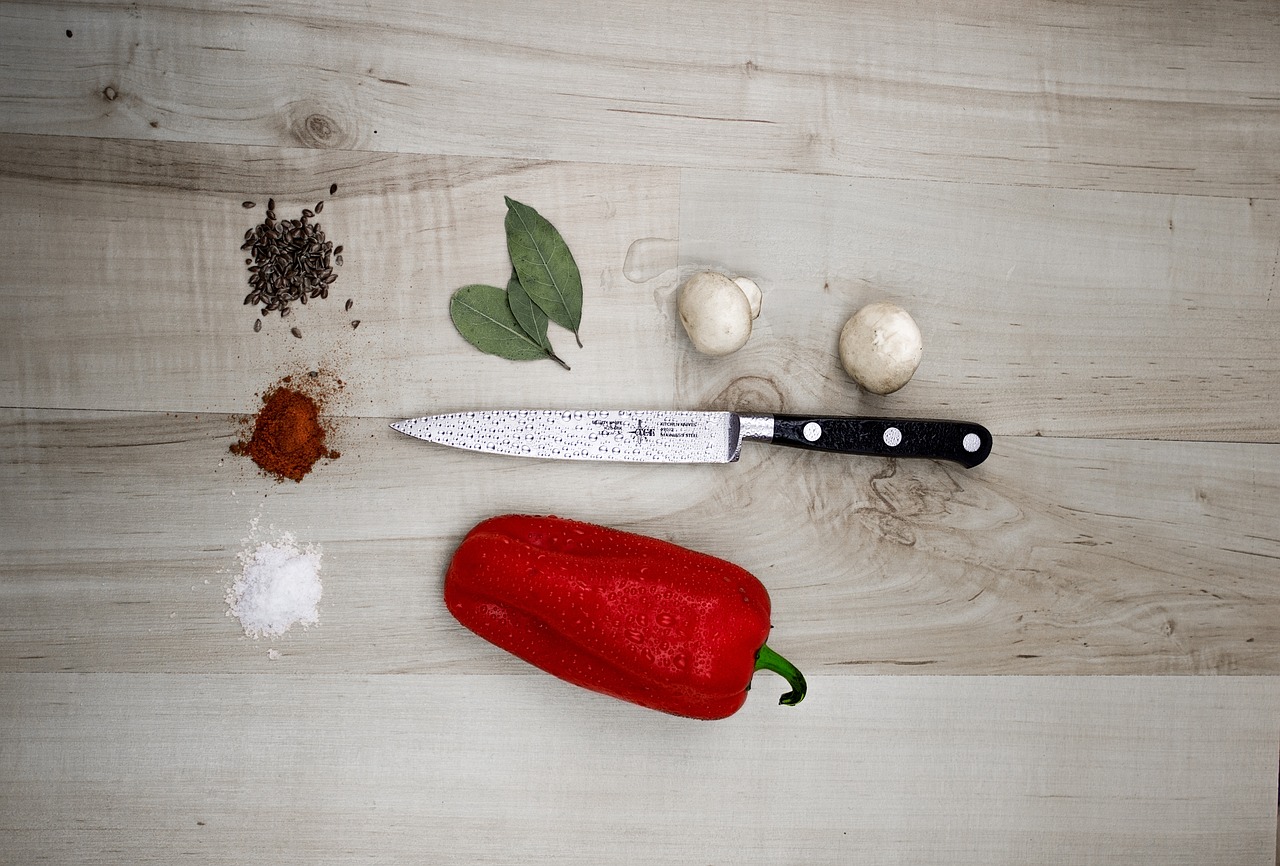
Scraping and Blending
When it comes to palette knife painting, scraping and blending are two fundamental techniques that can dramatically transform your artwork. These methods not only help in achieving smooth transitions between colors but also add an element of dynamism and depth to your creations. Imagine standing before a canvas, armed with your palette knife, ready to unleash a whirlwind of colors and textures. The excitement is palpable!
Scraping involves using the edge of the palette knife to remove paint from the canvas, revealing the layers underneath. This technique can create stunning effects, especially when you want to highlight certain areas or create a sense of movement. For instance, if you’ve applied thick layers of paint, a gentle scrape can reveal the vibrant hues below, adding a sense of intrigue to your piece. It’s like peeling back the layers of an onion to discover the rich flavors hidden within.
On the other hand, blending is all about merging colors smoothly to create gradients and soft transitions. This technique can be particularly useful when working with landscapes or portraits, where you want to achieve a realistic representation. By using the flat side of the palette knife, you can gently push and pull the colors together, creating a seamless flow that captures the eye. Think of it as frosting a cake—carefully smoothing out the edges to create a beautiful finish.
To master these techniques, consider the following tips:
- Experiment: Don’t be afraid to try different pressures and angles with your knife. Each stroke can yield a unique result.
- Work quickly: Paint dries fast, so be prepared to blend and scrape while the paint is still wet for the best effects.
- Practice: The more you practice scraping and blending, the more intuitive these techniques will become. Consider dedicating a canvas solely to experimentation.
Incorporating scraping and blending into your palette knife painting can elevate your artwork to new heights. Whether you're creating a stunning sunset or a vibrant floral piece, these techniques allow for a level of expression that can truly capture the viewer's imagination. Remember, art is not just about the final product; it's about the journey and the joy of creation. So grab your palette knife, let your creativity flow, and watch as your canvas transforms into a masterpiece!
Q: What type of paint is best for palette knife painting?
A: Oil paints and heavy-bodied acrylics are excellent choices as they maintain their texture and allow for easy manipulation.
Q: Can I use a palette knife with watercolor?
A: While palette knives are primarily used with thicker paints, you can experiment with them on watercolor paper for unique effects, but results may vary.
Q: How do I clean my palette knife after painting?
A: Clean your palette knife with a rag or paper towel to remove excess paint, and then wash it with soap and water for a thorough clean.

Choosing the Right Palette Knife
When it comes to palette knife painting, the choice of knife can significantly influence the outcome of your artwork. Selecting the right palette knife is not just about picking any tool; it's about understanding the different shapes and sizes available and how they can be used to achieve various effects. Just like a chef selects the right knife for a specific ingredient, an artist must choose wisely to create their masterpiece.
Palette knives come in various forms, each designed for particular techniques and styles. For instance, a straight-edged knife is fantastic for creating clean lines and sharp edges, while a rounded knife allows for smoother blends and softer textures. The size of the knife also matters; larger knives can cover more surface area quickly, making them ideal for background work, while smaller knives offer precision for detailed areas. Here’s a quick overview of some common types of palette knives:
| Knife Type | Best For |
|---|---|
| Straight Edge | Creating sharp lines and defined shapes |
| Rounded Edge | Blending colors and softening edges |
| Flexible Blade | Applying thick layers of paint and creating texture |
| Small Detail Knife | Fine details and intricate designs |
As you start your palette knife journey, consider the material of the knife as well. Most palette knives are made of either metal or plastic. Metal knives are more durable and provide a better feel for the paint, allowing for more control during application. On the other hand, plastic knives are lightweight and can be easier to handle, especially for beginners. It's all about what feels right in your hand.
Another essential factor to consider is how you plan to use your palette knife. If you're drawn to creating thick, textured layers, you might want to invest in a few flexible-bladed knives that can handle heavy paint. Conversely, if you prefer a more delicate touch, a smaller, straight-edged knife may be more suitable. Don't be afraid to experiment with different knives; each one can unlock new possibilities in your painting.
Ultimately, the best way to choose the right palette knife is to try them out! Visit your local art supply store and feel the knives in your hands. See how they glide over the paint and how comfortable they feel. Remember, the right tool can enhance your creative expression and make your palette knife painting experience even more enjoyable.
Here are some common questions artists often have when it comes to choosing the right palette knife:
- How many palette knives should I have? - It's a good idea to start with a few different types to experiment with various techniques.
- Can I use a palette knife for oil and acrylic paints? - Yes! Palette knives work well with both oil and acrylic paints, allowing for versatile application.
- Is there a specific brand of palette knife that is recommended? - There are many reputable brands, but it's best to choose based on comfort and usability rather than just the brand name.
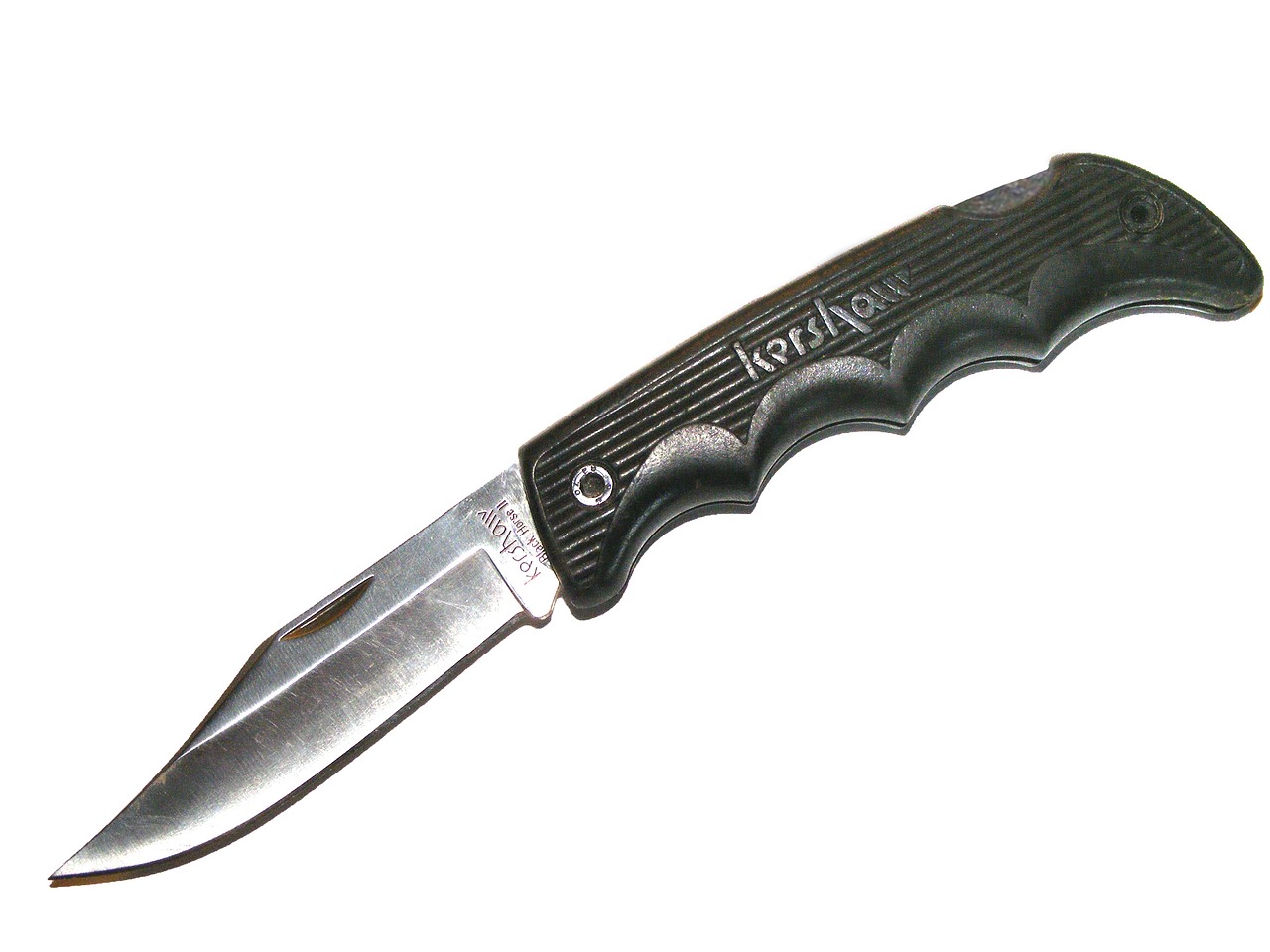
Inspiration from Famous Artists
When diving into the world of palette knife painting, it's impossible not to draw inspiration from the masters who have paved the way for this vibrant art form. Artists like Vincent van Gogh, Claude Monet, and more contemporary figures have utilized palette knives to create stunning textures and dynamic compositions. Their unique approaches can serve as a springboard for your own creativity, offering insights into how to manipulate color and texture effectively.
Take van Gogh, for example; his swirling skies and bold brushstrokes seem to leap off the canvas, a testament to the emotional power of color and form. His use of the palette knife not only adds a tactile quality to his work but also invites viewers into a world of movement and emotion. By studying his techniques, you might find yourself inspired to experiment with your own strokes, creating pieces that resonate on a personal level.
Another artist worth mentioning is Bob Ross, who famously brought the palette knife into the homes of millions through his television show. Ross's gentle guidance and emphasis on the joy of painting remind us that art is not just about the final product but the process itself. His techniques, which often involved layering and blending with a palette knife, can inspire both beginners and seasoned artists to embrace their creativity without fear of making mistakes.
On the contemporary front, artists like David Hockney have redefined palette knife painting, incorporating modern themes and vibrant colors that challenge traditional notions of landscape art. Hockney’s work is a brilliant example of how the palette knife can be used to create bold statements and capture the essence of a moment, inviting viewers to see the world through a fresh lens.
To further illustrate the impact of these artists, here’s a quick comparison of their techniques:
| Artist | Technique | Notable Work |
|---|---|---|
| Vincent van Gogh | Swirling strokes, thick application | Starry Night |
| Bob Ross | Layering and blending, soft transitions | Happy Little Trees |
| David Hockney | Bold colors, modern interpretations | A Bigger Splash |
By examining the styles and techniques of these artists, you can glean valuable insights into how to develop your own palette knife painting style. Remember, the most important aspect of art is to express yourself—let their journeys inspire yours!
- What is palette knife painting? Palette knife painting is a technique that uses a palette knife instead of a brush to apply paint, allowing for unique textures and effects.
- Can beginners try palette knife painting? Absolutely! Palette knife painting is accessible to artists of all skill levels, and it can be a fun way to explore creativity.
- What types of paint work best with palette knives? Oil and acrylic paints are commonly used, as they have the right consistency for creating texture.
- Do I need special palette knives? While there are various types of palette knives, a basic set will suffice for beginners. Experiment to find what works best for you!
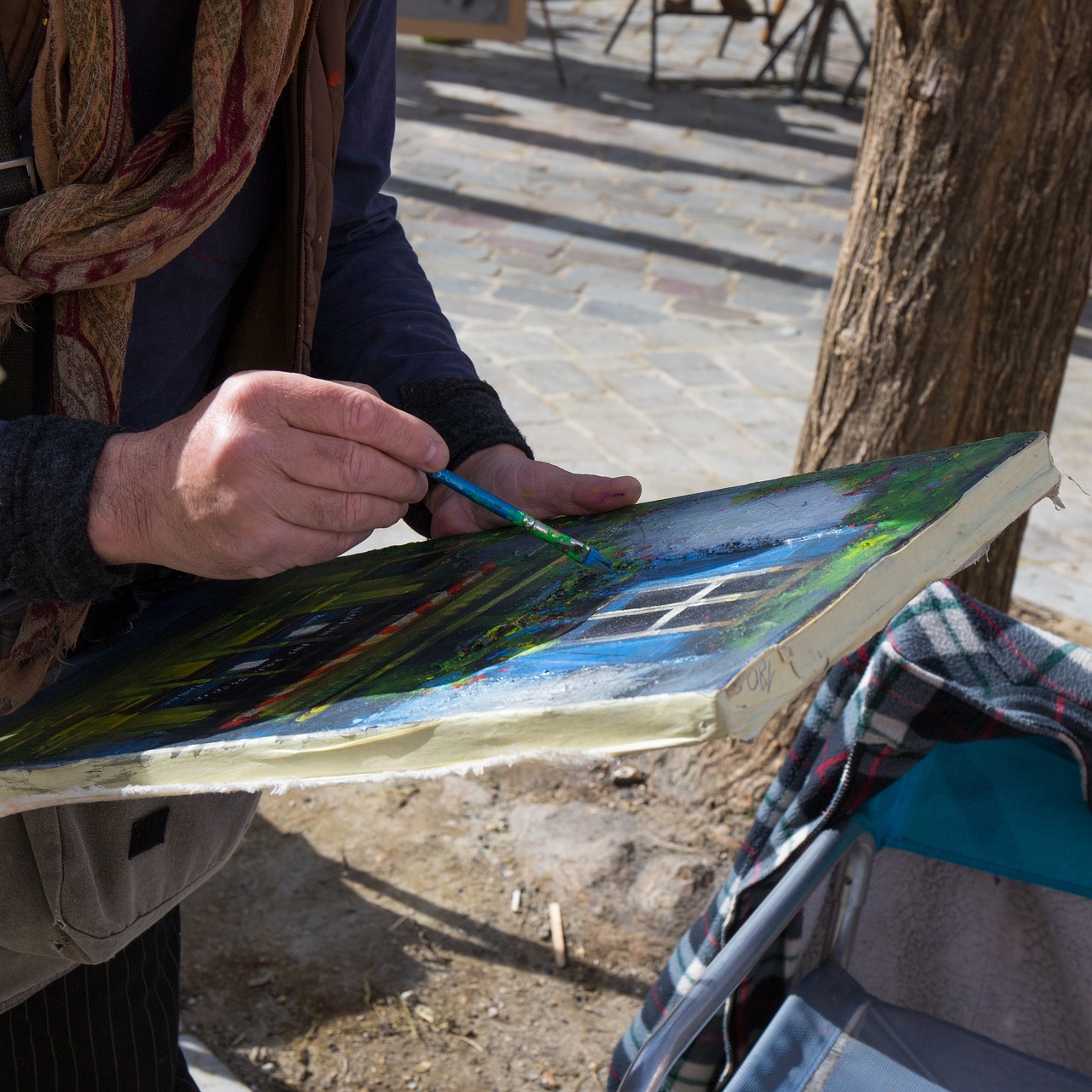
Contemporary Artists
In the vibrant world of palette knife painting, contemporary artists are redefining the boundaries of this expressive medium. They are not just using palette knives to create art; they are innovating and pushing the envelope, blending traditional techniques with modern themes. One such artist is Jasmine Becket-Griffith, who is known for her whimsical, fairy-tale-like creations. Her use of bold colors and intricate textures truly showcases the potential of the palette knife, making her work feel almost alive.
Another remarkable figure is David A. Leffel, whose mastery of light and shadow through palette knife techniques has garnered him acclaim in the art community. His paintings often evoke a sense of nostalgia, drawing viewers into a world where each stroke tells a story. Leffel's ability to create depth through layering and scraping techniques is a testament to the versatility of the palette knife, allowing him to transform simple scenes into dramatic landscapes.
Moreover, the works of Michael James Smith reflect a unique fusion of realism and impressionism. His landscapes, often painted en plein air, capture the essence of nature with a bold palette and dynamic textures that only a palette knife can produce. Smith's approach emphasizes the importance of spontaneity in art, encouraging artists to embrace the unexpected while working with their knives.
These contemporary artists not only inspire budding painters but also challenge seasoned artists to explore new dimensions in their work. Their techniques often involve a mix of impasto and glazing, allowing for a rich interplay of colors and textures. For example, Becket-Griffith often layers thick applications of paint, creating a three-dimensional effect that invites viewers to engage more deeply with her art.
To illustrate the diversity of contemporary palette knife artists, here's a brief overview of their unique styles and techniques:
| Artist | Style | Notable Technique |
|---|---|---|
| Jasmine Becket-Griffith | Whimsical | Bold Color Application |
| David A. Leffel | Realism | Light and Shadow Mastery |
| Michael James Smith | Impressionism | Spontaneity and Textural Depth |
As you can see, each artist brings a unique flavor to the palette knife painting scene, demonstrating that this art form is far from stagnant. The evolution of palette knife painting continues to thrive, driven by the creativity and passion of contemporary artists who are not afraid to experiment and break the mold. So, if you're looking for inspiration, dive into the works of these modern masters and let their artistry guide you on your own artistic journey!
1. What is palette knife painting?
Palette knife painting is a technique that uses a palette knife instead of a brush to apply paint to the canvas, allowing for unique textures and effects.
2. Can beginners try palette knife painting?
Absolutely! Palette knife painting is accessible for beginners and can be a fun way to explore creativity without the need for precise brushwork.
3. What types of paint are best for palette knife painting?
Oil paints and heavy-bodied acrylics are ideal for palette knife painting due to their thick consistency, which holds texture well.
4. How do I choose the right palette knife?
Select a palette knife based on the size and shape of the blade that fits your painting style. Wider blades are great for larger areas, while smaller ones are perfect for details.
5. Where can I find inspiration for palette knife painting?
You can find inspiration from various sources, including contemporary artists, online art communities, and even nature itself!
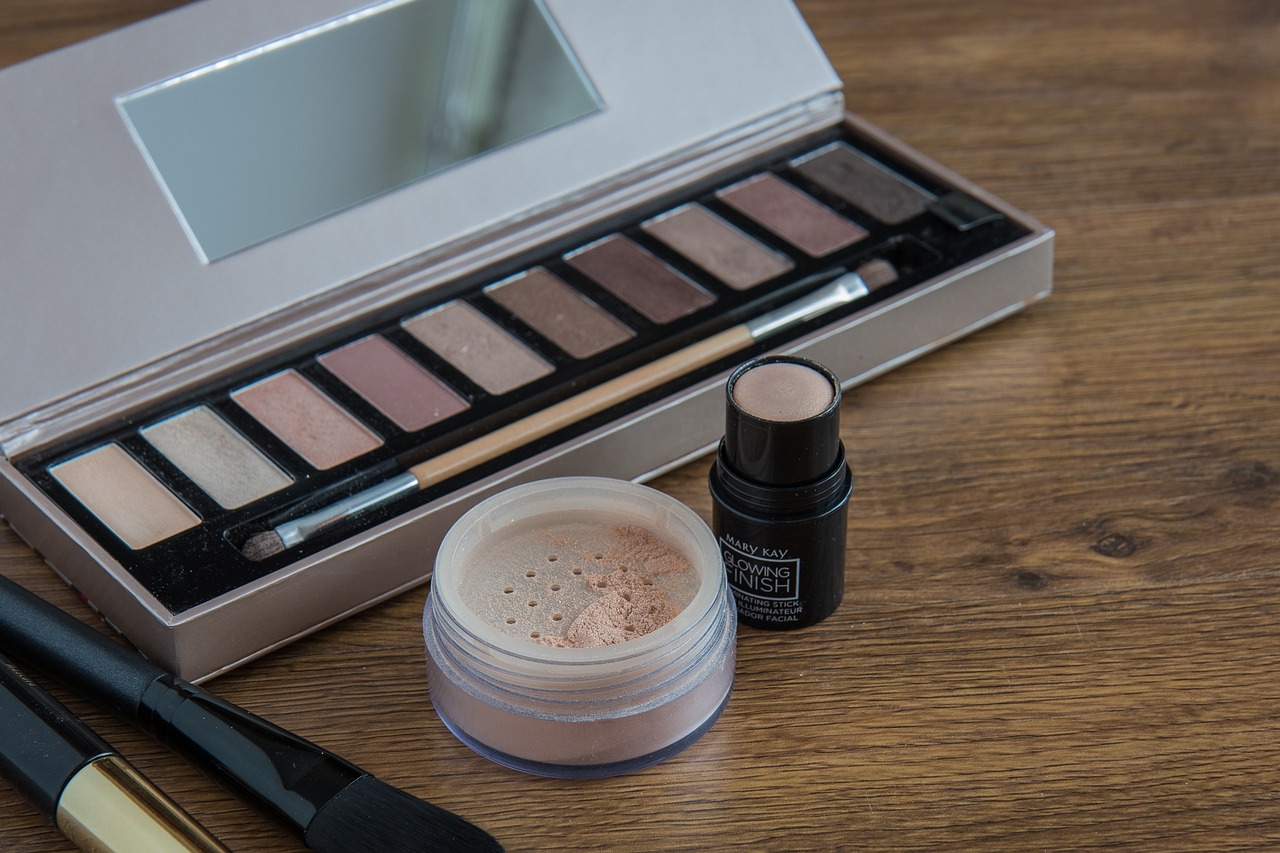
Historical Influences
Understanding the behind palette knife painting can significantly enrich your artistic practice. This technique, while contemporary in many respects, has roots that stretch back through various artistic movements. The palette knife, once considered merely a tool for mixing paint, has evolved into a vital instrument for creating texture and depth in artwork. Artists throughout history have embraced this tool, transforming it into a medium of expression that resonates today.
One of the most notable influences on palette knife painting can be traced back to the Impressionists of the late 19th century. Artists like Claude Monet and Vincent van Gogh experimented with texture and color in revolutionary ways. Van Gogh, in particular, is known for his bold brush strokes and the use of palette knives to create thick, expressive layers of paint. His famous works, such as "Starry Night," showcase how texture can evoke emotion and movement, providing a glimpse into the artist's psyche.
As we moved into the 20th century, the Post-Impressionist movement continued to influence the use of palette knives. Artists like Henri Matisse and Pablo Picasso pushed boundaries, incorporating more abstract forms and vibrant colors into their work. Matisse's bold color palette and dynamic compositions often utilized palette knives to achieve a sense of rhythm and vitality. This exploration laid the groundwork for future movements, including Expressionism and Abstract Art, where artists began to prioritize emotion over realism.
In the latter half of the 20th century, the rise of Abstract Expressionism further highlighted the significance of texture in painting. Artists like Jackson Pollock and Mark Rothko inspired a generation to embrace spontaneity and emotional depth in their work. Palette knives became synonymous with this movement, as they allowed for the application of paint in a way that was both controlled and chaotic. The tactile nature of the palette knife mirrored the artists' desire to express raw emotion, creating a visceral connection between the artwork and the viewer.
To illustrate the evolution of palette knife techniques throughout history, consider the following table that highlights key artists and their contributions:
| Artist | Movement | Contribution |
|---|---|---|
| Vincent van Gogh | Post-Impressionism | Used palette knives to create thick, expressive strokes in his paintings. |
| Henri Matisse | Fauvism | Employed vibrant colors and dynamic forms using palette knives. |
| Jackson Pollock | Abstract Expressionism | Utilized palette knives for spontaneous, textured applications of paint. |
As you delve deeper into palette knife painting, it's essential to recognize these historical influences. They not only shaped the technique but also opened doors for modern artists to explore their creativity without limitations. The legacy of these artists serves as a reminder that the palette knife is more than just a tool; it is a bridge between tradition and innovation, allowing you to express your unique artistic voice.
Q: What is palette knife painting?
A: Palette knife painting is a technique that involves using a palette knife instead of a brush to apply paint to a canvas. This method allows for the creation of unique textures and vibrant color applications.
Q: Do I need to be an experienced artist to try palette knife painting?
A: Not at all! Palette knife painting is accessible to artists of all skill levels. Beginners can enjoy the process of experimenting with textures and colors, while experienced artists can refine their techniques.
Q: What types of paint work best with palette knives?
A: Oil paints and acrylics are both excellent choices for palette knife painting. Each type of paint offers different textures and drying times, so choose based on the effect you want to achieve.
Q: Can I use palette knives for other art forms?
A: Absolutely! Palette knives can be used in various art forms, including mixed media, sculpture, and even in creating textures on paper for printmaking.
Frequently Asked Questions
- What is palette knife painting?
Palette knife painting is an expressive art form that uses a flat, blunt tool called a palette knife to apply paint to a canvas. This technique allows artists to create unique textures and vibrant colors, giving their artwork a dynamic and layered appearance.
- What are the basic techniques in palette knife painting?
Some fundamental techniques include scraping, layering, and blending. Scraping helps to remove paint for a smooth finish, layering allows for depth and complexity, while blending creates soft transitions between colors, enhancing the overall visual impact of the piece.
- Do I need special tools for palette knife painting?
While a palette knife is essential, you don’t need an extensive toolkit to get started. A few different sizes of palette knives, along with standard acrylic or oil paints, can help you explore this art form effectively.
- Can beginners try palette knife painting?
Absolutely! Palette knife painting is perfect for beginners as it encourages experimentation and creativity. The forgiving nature of the medium allows new artists to learn and grow without the pressure of achieving perfection right away.
- What are the benefits of palette knife painting?
Engaging in palette knife painting can enhance your creativity, improve motor skills, and provide a fulfilling artistic experience. It also helps in developing a unique style and encourages you to think outside the box when it comes to color and texture.
- How can I create textures with a palette knife?
To create textures, experiment with different techniques such as applying thick layers of paint, scraping off paint to reveal the layers beneath, or using the edge of the knife to create lines and patterns. The possibilities are endless!
- Who are some famous artists known for palette knife painting?
Many artists have embraced palette knife techniques, including Vincent van Gogh and contemporary artists like Leonid Afremov. Studying their work can provide inspiration and insight into how you can incorporate similar techniques into your own art.
- What should I consider when choosing a palette knife?
When selecting a palette knife, consider the size, shape, and flexibility of the blade. Different knives can produce varying effects, so it’s beneficial to have a few options to experiment with as you find your preferred style.
- Is palette knife painting suitable for all ages?
Yes! Palette knife painting is suitable for artists of all ages. It’s a fun and engaging way for children and adults alike to express themselves creatively while developing fine motor skills.
- Can I mix palette knife painting with other mediums?
Definitely! Palette knife painting can be combined with other mediums such as watercolor, acrylics, or oils. Mixing techniques can lead to unique results and broaden your artistic horizons.



















